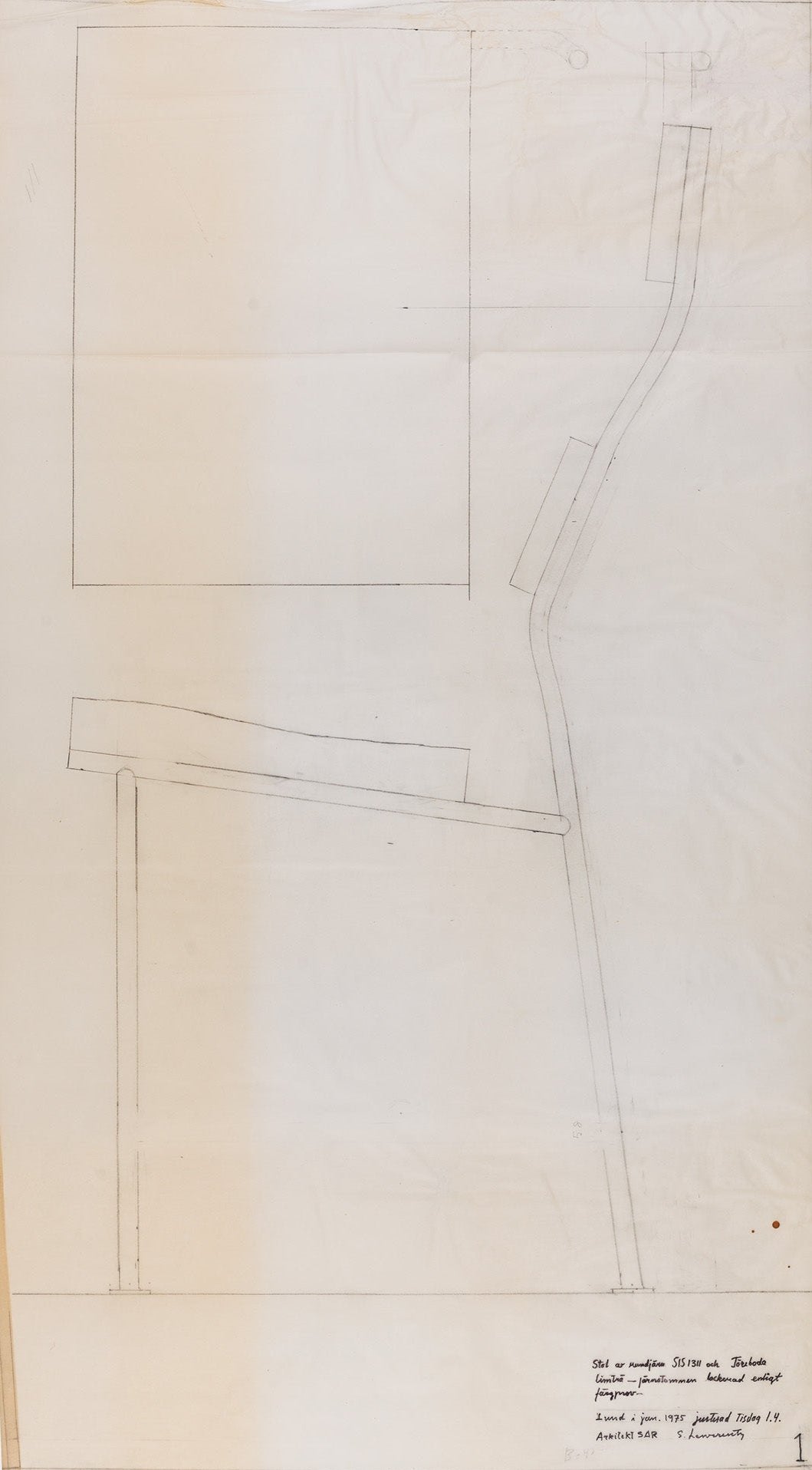


Törebodaserien
Törebodakollektionen är Sigurd Lewerentz sista verk, färdigställd bara ett år före hans död 1975. Trots att den var avsedd för serieproduktion tillverkades möblerna endast i ett fåtal exemplar. Stolens design kan härledas till en prototyp han utvecklade ett tiotal år tidigare för att testa ergonomin hos sina tegelbänkar i S:t Petri kyrka i Klippan. Utformningen av bordets toppskiva påminner om dörrarna som återfinns i S:t Petri kyrka såväl som Markuskyrkan i Björkhagen.
Lewerentz samarbete med producenten, limträtillverkaren Töreboda Limträ AB, hade startat i mitten av seklet och intensifierats under byggandet av Markuskyrkan i Björkhagen. Utan det nära samarbetet mellan Lewerentz och tillverkaren hade möblerna förmodligen aldrig sett dagens ljus. Viktigt stöd gavs också av Bernt Nyberg, arkitekt och nära kollega till Lewerentz i slutskedet av hans liv.
De ursprungliga möblerna var gjorda av limträ (furu) och lackat stål (tomatrött). Tallum tillhandahåller originalutförandet och en version i elförzinkat stål.
Sigurd Lewerentz
Sigurd Lewerentz (1885–1975) arbete sträcker sig över nästan sju decennier. Han föddes i Bjärtrå i norra Sverige och utbildades vid Chalmers tekniska högskola i Göteborg, följt av en lärlingsperiod i Tyskland. Efter att ha bosatt sig i Stockholm öppnade han sitt eget kontor 1911. Genombrottet kom när han tillsammans med Gunnar Asplund år 1915 vann första pris i den internationella arkitekturtävlingen för utformningen av en ny kyrkogård (Skogskyrkogården) i Stockholm. Lewerentz ritade på egen hand det nyklassicistiska Uppståndelsekapellet (1925) och ansvarade till stor del för markplaneringen och landskapsarkitekturen.
Till Stockholmsutställningen 1930 designade Lewerentz såväl bostäder, som möbler och grafik. Dessutom presenterade han exklusiva dörr- och fönsterbeslag i metall under sitt nya varumärke Idesta. Hans viktigaste projekt från den funktionalistiska eran var dock Riksförsäkringsanstalten (1932). Bara några år senare var hans ”vita period” över och han började utveckla en arkitektur präglad av materialitet, manifesterad i Villa Edstrand i Falsterbo (1937). En liknande betoning på materialitet men med mer subtila detaljer kännetecknar kapellen S:t Knut och S:t Gertrud på Östra kyrkogården i Malmö (1943). Malmö stadsteater (1944) ritade han tillsammans med arkitekterna David Helldén och Erik Lallerstedt.
Bildkälla
Sigurd Lewerentz. Foto av Bernt Nyberg





